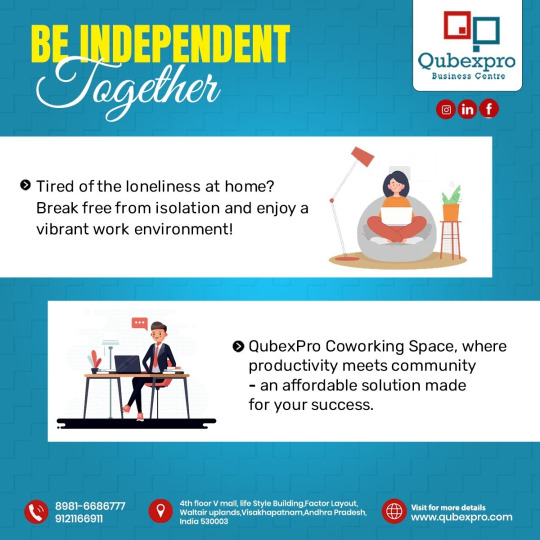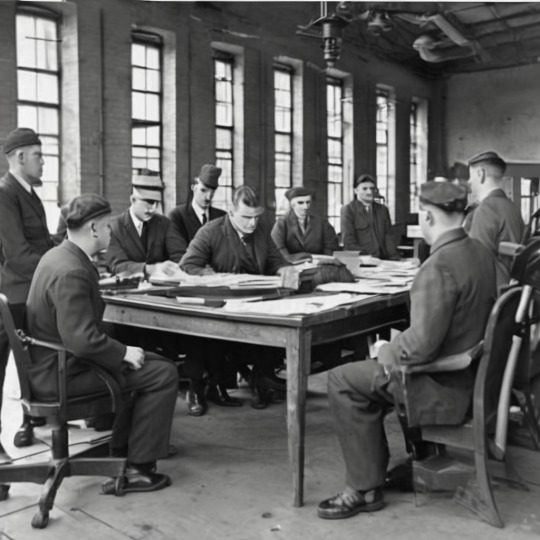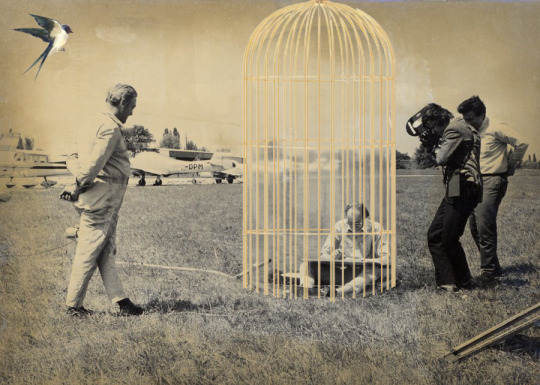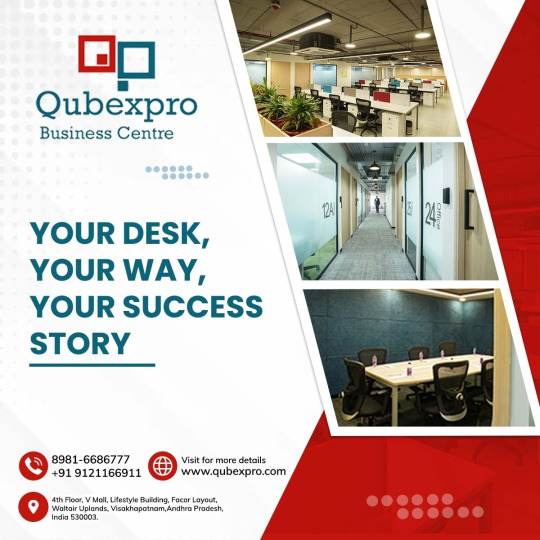#workenvironments
Explore tagged Tumblr posts
Text

Thursday/May 30, 2024
It's my fourth day at work, and the environment is incredibly welcoming to new employees. I'm wondering if I can see myself working here long-term, but so far, everything feels positive. The atmosphere is calm and supportive, and I haven't sensed any negativity that could hinder a smooth work experience.
I came across a jar filled with colorful rolled papers that had a 'take one' sign. I hesitated before picking one, closing my eyes and praying to see if this is a good fit for me and if I'll find happiness here. Then, I read the message: 'This is my happy place.'
Reading the message brought a sense of calm, and I'm content to leave everything in God's hands if this is His will for me.
9 notes
·
View notes
Text
Is your workplace safe from mold? Book our Mold Inspection today!
Don't risk your employees' health and well-being if your space is kept with mold. Our expert mold inspection can help you detect and eliminate any mold-related risks in your workplace. With our thorough inspection, you can ensure a healthy and productive work environment.
Go here to know more https://www.youtube.com/watch?v=wFWYHvnNsa0

#funguymoldinspections#moldinspection#moldissues#certifiedmoldinspection#professionalmoldinspection#moldinspectionservices#reliablemoldinspections#mold#moldgrowth#effectivemoldinspection#safe#workplace#moldetecting#moldrisks#workenvironment#health#wellbeing#employees
2 notes
·
View notes
Text
Fostering inspirational leadership
Read More:
#BusinessGrowth#Collaboration#Leadership#Communication#CorporateValues #WorkRecognition#BusinessStrategies#WorkEnvironment#OrganizationalTrust#ProfessionalDevelopment#Innovation#BusinessVision#Teamwork
0 notes
Text
youtube
❔❔ INTERVIEW QUESTION 2: "WHICH WORK ENVIRONMENT WOULD SUIT YOU BEST?" Another typical interview question we often hear. You'll find some tips & tricks in the video. Special mention to my amazing actors: Angélique, our champion specializing in Legal & Compliance, & Diego, our tiger specializing in Construction
Are you looking for candidates or for a job (or even both😉)? Feel free to contact us at Gentis Recruitment. More daily tips & tricks? Feel free to check my Instagram page: stephanie_reniers
Importance de l'environnement de travail : Il est essentiel de s'assurer que l'environnement de travail correspond à vos attentes, car cela influence directement votre épanouissement professionnel.
#StephanieReniers#JobInterviewTips#WorkEnvironment#CareerAdvice#InterviewQuestions#JobSearch#ProfessionalGrowth#CareerSuccess#JobHunting#WorkCulture#EmploymentTips#Leadership#RH#Talents#AdrienVicard#EntrepriseFrançaise#InnovationRH#CultureDEntreprise#Employabilité#DéveloppementDesRH#PodcastEntreprise#Youtube
0 notes
Text
Elevate Your Business with Qubex Pro – VIP Road’s Premier Workspace!

Outline
Business Center in VIP Road – Qubex Pro
Introduction
What is Qubex Pro?
Overview of Qubex Pro
Why Qubex Pro is Different
Prime Location on VIP Road
Importance of VIP Road Location
Accessibility and Connectivity
Facilities and Amenities at Qubex Pro
High-Speed Internet and Tech Infrastructure
Fully Furnished Office Spaces
Meeting Rooms and Conference Halls
Co-Working Spaces and Hot Desks
Lounge and Break Areas
Office Solutions for Every Business
Private Offices
Shared Workspaces
Virtual Office Solutions
Why Qubex Pro Stands Out from Competitors
Flexibility and Customization
Professional Environment
Benefits of Setting Up an Office at Qubex Pro
Networking Opportunities
Cost-Effectiveness
Boost in Business Credibility
Safety and Security Measures
24/7 Security
Surveillance Systems
How Qubex Pro Supports Business Growth
Business Support Services
Mentorship and Guidance
Who Can Benefit from Qubex Pro?
Startups
Freelancers
Established Corporations
Client Testimonials and Success Stories
Real-Life Success Stories
What Clients Love About Qubex Pro
How to Book a Space at Qubex Pro
Step-by-Step Process
Contact Information
Pricing and Membership Plans
Flexible Plans
What’s Included in Each Plan
Future Plans and Expansion of Qubex Pro
Upcoming Developments
New Facilities and Services
Conclusion
FAQs
Business Center in VIP Road – Qubex Pro
Introduction
Looking for a premium business center in VIP Road that caters to all your professional needs? Welcome to Qubex Pro – the ultimate destination for businesses, freelancers, and entrepreneurs seeking a modern, flexible, and fully equipped workspace. Qubex Pro isn’t just an office space – it’s a dynamic business hub designed to support growth, innovation, and success. If you’re ready to elevate your business, explore Qubex Pro today by visiting Qubex Pro.
What is Qubex Pro?
Overview of Qubex Pro
Qubex Pro is a state-of-the-art business center in VIP Road. It offers a range of flexible office solutions, including private offices, co-working spaces, virtual offices, and meeting rooms. Designed with modern business needs in mind, Qubex Pro provides a professional yet comfortable environment where productivity thrives.
Why Qubex Pro is Different
Unlike traditional office spaces, Qubex Pro focuses on flexibility, convenience, and community. Whether you’re a freelancer needing a quiet place to work or a growing business looking for a long-term solution, Qubex Pro has you covered. Discover more about their services at Qubex Pro.
Prime Location on VIP Road
Importance of VIP Road Location
VIP Road is one of the most sought-after business locations due to its connectivity, high foot traffic, and business-friendly environment. Being located here gives businesses a strategic advantage, allowing them to connect with clients and partners easily.
Accessibility and Connectivity
Qubex Pro is well-connected to major transport links, including airports, highways, and public transport systems. This ensures that clients and employees can reach the business center in VIP Road with ease.
Facilities and Amenities at Qubex Pro
High-Speed Internet and Tech Infrastructure
Qubex Pro is equipped with high-speed internet and advanced technology infrastructure to support seamless communication and workflow.
Fully Furnished Office Spaces
The offices at Qubex Pro are stylishly furnished and ready to use. No need to worry about setting up furniture or equipment – it’s all included.
Meeting Rooms and Conference Halls
Host professional meetings in fully equipped conference rooms with audio-visual facilities and comfortable seating.
Co-Working Spaces and Hot Desks
Flexible co-working options are available for freelancers and small teams. Hot desks are perfect for those needing a temporary but professional work environment.
Lounge and Break Areas
Take a break in comfortable lounge areas, designed to foster relaxation and informal networking.
Office Solutions for Every Business
Private Offices
Ideal for businesses needing a dedicated space with full privacy and amenities.
Shared Workspaces
Perfect for freelancers and startups looking for cost-effective yet professional spaces.
Virtual Office Solutions
Get a professional business address and phone number without needing a physical office.
Why Qubex Pro Stands Out from Competitors
Flexibility and Customization
Qubex Pro offers tailored solutions to meet the specific needs of every client.
Professional Environment
With a sleek, modern design and professional ambiance, Qubex Pro makes a great first impression.
Benefits of Setting Up an Office at Qubex Pro
Networking Opportunities
Meet and collaborate with like-minded professionals.
Cost-Effectiveness
Flexible pricing plans make it easy to find a solution within your budget.
Boost in Business Credibility
Having an office at Qubex Pro enhances your business’s reputation and credibility.
Safety and Security Measures
24/7 Security
CCTV Surveillance
Access Control Systems
How Qubex Pro Supports Business Growth
Qubex Pro provides business support services, including admin assistance, mail handling, and mentorship programs to help businesses grow.
Who Can Benefit from Qubex Pro?
Startups – Flexible spaces and cost-effective plans.
Freelancers – Professional environment and networking opportunities.
Established Corporations – High-end infrastructure and prime location.
Client Testimonials and Success Stories
"Qubex Pro has transformed the way we work. The flexibility and support we receive are unmatched!" – John D., Business Owner
How to Book a Space at Qubex Pro
Visit the Qubex Pro website.
Choose your preferred office type.
Schedule a tour or book online.
Pricing and Membership Plans
Qubex Pro offers flexible pricing plans with no hidden costs. Options include daily, weekly, and monthly rates.
Future Plans and Expansion of Qubex Pro
Qubex Pro is planning to expand its services and add more facilities to meet the growing demand.
Conclusion
Qubex Pro on VIP Road offers the perfect blend of professionalism, flexibility, and convenience. Whether you’re a freelancer, startup, or established business, Qubex Pro has a solution tailored for you.
FAQs
What are the operating hours of Qubex Pro?
Qubex Pro operates 24/7, offering maximum flexibility to its clients.
Is Qubex Pro suitable for small businesses?
Yes, Qubex Pro offers flexible solutions ideal for small businesses.
Can I host events and workshops at Qubex Pro?
Yes, Qubex Pro has conference rooms and event spaces available for booking.
Are there any hidden costs involved?
No, Qubex Pro maintains transparent pricing with no hidden charges.
How does Qubex Pro handle security and privacy?
Qubex Pro provides 24/7 security, surveillance, and access control to ensure privacy and safety.
#coworkingspace#qubexpro#productiveworkspace#workfromanywhere#communityworkplace#affordableworkspace#networkingopportunities#worklifebalance#visakhapatnam#workenvironment#businesssuccess#remoteworking#freelancerlife#independenttogether#officealternative
0 notes
Text
0 notes
Text
The Development of Personnel Management and Industrial Relations: A Historical Perspective

The fields of personnel management and industrial relations have undergone considerable evolution, influenced by social, economic, and political factors across various countries. A comparative look at the United Kingdom and the United States provides insight into the development of these disciplines from a historical perspective, with differences that reflect each country’s approach to labor and management.
The Role of Personnel Management in Britain
In Britain, personnel management developed as a field distinct from industrial relations, with a greater focus on human resources and labor management within organizations. Early attention to personnel management in Britain is often attributed to the efforts of organizations like the Chartered Institute of Personnel and Development (CIPD). Originally known as the Chartered Institute of Personnel and Development (CIPD), this institution was established to professionalize and formalize the practice of personnel management, emphasizing skills in managing and developing staff.
British universities, compared to other European nations, invested significantly in research and teaching related to human relations and industrial relations, with relatively limited focus on labor law. This reflects the British context, where employment regulations were traditionally light and less reliant on legal frameworks. Industrial relations in Britain, therefore, were often focused on labor-management relations, specifically in terms of union relationships and collective bargaining. However, as noted by Gospel (1992), beginning in the mid-1960s, there was a shift in focus, with increasing attention on management practices. This shift coincided with growing complexities in labor relations and the need for more refined approaches to managing human resources within organizations.
Human Relations and Industrial Relations in the United States
In contrast, the United States experienced a boom in human resources management (HRM) broadly defined during the period from 1945 to 1965, while personnel management itself remained relatively stagnant. The term "industrial relations" in America continued to be applied broadly, encompassing all facets of employment, including personnel. As the country emerged from World War II, the spread of unionism spurred the establishment of numerous industrial relations centers and institutes at universities, many of which had been absent before the war. Kaufman (2004) highlights that the impetus for these programs was primarily the rapid expansion of unions and the ensuing challenges around collective bargaining, dispute resolution, and contract administration.
Furthermore, industrial relations in the U.S. saw a rise in interest around human relations within industry, driven by an understanding that the well-being of employees significantly influenced organizational outcomes. With the focus on management and organizational design, many American universities began exploring human relations principles to foster a healthier work environment and improve productivity. The expansion of industrial relations programs in this period reflected a broader acknowledgment of the importance of employee welfare and workplace harmony.
Comparative Development and Contemporary Implications
The historical context of personnel management and industrial relations in both Britain and the United States provides a foundation for understanding contemporary human resources practices. Britain’s approach, rooted in managing union relations and emphasizing limited legal intervention, contrasts with the broader American view of industrial relations as encompassing all aspects of employment. This divergence reflects the unique labor histories and economic policies in each country and continues to influence contemporary HRM practices and policies.
Overall, the development of personnel management and industrial relations underscores the dynamic nature of labor and employment practices. As organizations continue to adapt to changing economic and social landscapes, the historical insights from Britain and the United States remain valuable in shaping effective human resources strategies today.
Unseen Influences: The Evolution of Personnel Management and Industrial Relations in Britain and the United States

One lesser-known influence on the evolution of industrial relations and personnel management was the impact of social changes, especially in the post-war period. In both Britain and the United States, societal shifts — such as the civil rights movement, the growing role of women in the workforce, and changing attitudes towards work-life balance — influenced the development of HR practices. Companies began to adopt policies that recognized diversity and inclusion, though these were initially seen as progressive changes rather than standard practices. Over time, however, these movements began to reshape HR policies and company cultures, laying the groundwork for what would eventually become core elements of modern personnel management.
Similarly, technological advancements brought new challenges and opportunities to personnel management. The introduction of computers and automation in the workplace during the mid-20th century changed the nature of jobs, influencing workforce demands and reshaping traditional roles. Management had to adapt by developing strategies for retraining employees, managing redundancies, and addressing fears around job security. These shifts underscored the need for personnel management to evolve and respond not only to economic and political factors but also to the fast-paced changes in technology and society.
A Broader Perspective on Industrial Relations
In Britain, industrial relations traditionally focused on union and labor relations, yet there were broader aspects tied to economic and political frameworks that shaped the scope of these relations. For instance, during the economic struggles of the 1970s, Britain’s labor market faced significant pressures, which led to widespread strikes and industrial action. These events forced both businesses and the government to consider more robust HR policies and labor relations frameworks to manage worker dissatisfaction and improve productivity. However, these policies were often seen as reactive rather than proactive, contrasting with some approaches in the United States, where industrial relations were sometimes designed to encompass long-term strategic goals for employee engagement.
Another unknown aspect is the role of government influence. In the U.S., federal policies during the New Deal era had established a strong foundation for worker protections and union rights. This continued into the post-war period, where government-backed initiatives played a role in shaping the HR and industrial relations landscape. For example, the establishment of the National Labor Relations Board (NLRB) provided a structured approach to handling labor disputes and collective bargaining, making industrial relations a more formalized field. In Britain, however, government intervention was historically lighter, with a tendency to let market forces dictate labor relations. It was only during times of economic crisis, such as the 1970s, that the government took a more active role in mediating labor relations.
Unknown but Significant: The Role of Educational Institutions
Educational institutions in both Britain and the U.S. played a crucial, albeit often unrecognized, role in developing personnel management and industrial relations. In the United States, industrial relations programs expanded significantly after World War II, largely due to the influence of renowned universities such as Cornell and MIT, which became leading centers for labor studies and personnel management. The work done in these academic institutions contributed to developing management theories and best practices that would later influence mainstream HR practices.
In Britain, the rise of personnel management as a recognized field was supported by academic institutions, though on a smaller scale. The relatively limited number of programs dedicated to HR and industrial relations resulted in fewer research advancements compared to the U.S. However, British institutions focused on practical applications, integrating research with real-world labor issues, particularly as union influence grew. By collaborating with industries, British universities managed to develop HR theories that, while not as widely published as those in the U.S., were nonetheless instrumental in shaping local practices in personnel management and labor relations.
Conclusion
The unseen aspects of the development of personnel management and industrial relations reveal the complexity of these fields and the multitude of influences that shaped them. From social and technological changes to the subtle yet significant role of educational institutions, the history of personnel management and industrial relations is rich with influences that are often overlooked. Understanding these unknown elements offers a more comprehensive perspective on how HR practices have evolved and highlights the importance of adaptability in response to both internal and external factors.
Looking forward, the field of HR continues to evolve, incorporating lessons from these historical contexts while adapting to new challenges, such as the integration of artificial intelligence, globalization, and the continued demand for a more inclusive and equitable workplace. By appreciating the known and unknown influences on personnel management and industrial relations, organizations and HR professionals are better equipped to meet the demands of a changing world and build more resilient and forward-looking employment practices.
#PersonnelManagement#IndustrialRelations#HistoricalPerspective#UK#US#LaborManagement#HumanResources#UnionRelations#CollectiveBargaining#HumanRelations#OrganizationalDesign#EmployeeWelfare#WorkplaceHarmony#HRMPractices#LaborHistory#EconomicPolicies#ContemporaryImplications#ComparativeDevelopment#CharteredInstituteOfPersonnelAndDevelopment (CIPD)#HumanResourcesManagement (HRM)#IndustrialRelationsCenters#Universities#LaborLaw#EmploymentRegulations#ManagementPractices#Productivity#WorkEnvironment
1 note
·
View note
Text
#cv#job#nepal#cvforjob#informativecv#cv_for_job#work#jobsinnepal#workenvironment#work_space_in_nepal#cvprovider#cvmaker#strongcv#appealingcv#cvforwork#jobsnepal#makecv
0 notes
Text
youtube
#KarnatakaGovernment#14HourWorkday#PrivateCompanies#LaborLaws#WorkerRights#EconomicImpact#PoliticalControversy#HealthEffects#WomenEmployment#NightShifts#IndustrialGrowth#ForeignInvestment#LaborUnions#WorkLifeBalance#FactoryWorkers#LegislativeAssembly#EconomicDevelopment#EmploymentOpportunities#WorkerSafety#LaborRights#NewBill#KarnatakaNews#CurrentAffairs#BusinessNews#IndustryUpdate#WorkerWelfare#LongWorkingHours#OvertimePolicy#WorkEnvironment#Youtube
0 notes
Text
youtube
‘I feel valued here'—that's a common sentiment among our members.
In this video, our amazing members share their experiences and give you a glimpse into what it's like to be part of our team.
Whether you're considering a career with us or simply curious about our culture– this video answers your questions.
P.S. Things got a little interesting when we filmed this video. Watch it till the end!
1 note
·
View note
Link
The world remembers Grand Theft Auto V (GTA V) for its record-breaking sales, sprawling open world, and immersive gameplay. However, a recent interview with a former developer sheds light on a contrasting reality – a development process marred by pessimism and a potentially toxic work environment. Behind the Scenes of a Gaming Giant: A Culture of Discontent Jonathan Gwin, a former senior environment artist at Rockstar Games, provided a glimpse into the studio's atmosphere during his tenure working on GTA V from 2011 to 2012. His description paints a stark picture, far removed from the glamorous image often associated with successful video game development. Grand Theft Auto V Gwin's primary concern centered on the pervasive negativity that permeated the development team. He describes a culture of pessimism, where both management and colleagues displayed a disheartening lack of enthusiasm for the project. Despite the immense success of previous Rockstar titles, Gwin highlights a sense of stagnation and resistance to innovation within the company's leadership. However, the most significant source of negativity, according to Gwin, stemmed from his fellow developers. He portrays a work environment saturated with complaints and negativity, which ultimately became a strain on his own morale. "I was oppressed not so much by the company itself as by the attitude of the people who surrounded me towards it," Gwin reflects. "They complained so much and were so negative about everything..." Gwin's experience underscores the potential downsides of working in a highly demanding industry. Long hours, intense pressure, and missed opportunities for work-life balance can all contribute to employee discontent. In the worst-case scenario, such factors can create a breeding ground for negativity and a toxic work environment. Leaving Paradise: In Search of a Positive Work Culture Gwin's decision to leave Rockstar Games in GTA V's development highlights the impact a negative work environment can have on employee well-being. He describes a turning point where the constant negativity became untenable, prompting him to seek a more positive work environment elsewhere. While Gwin's experience is just one anecdote, it raises important questions about the working conditions within game development studios. Healthy work environments are crucial for fostering creativity, innovation, and ultimately, the creation of high-quality games. A Look Towards the Future: Lessons Learned? It's important to acknowledge that Gwin's experience took place over a decade ago. Rockstar Games has undoubtedly undergone significant changes since then. Reports suggest the company has taken steps to address employee concerns and cultivate a more positive work culture. Whether these reported improvements have materialized remains to be seen. However, Gwin's story serves as a valuable reminder of the importance of fostering positive work environments within the gaming industry. Prioritizing employee well-being and fostering a culture of collaboration and enthusiasm are essential ingredients for sustained success in the long run. Frequently Asked Questions: Does this mean Grand Theft Auto V was a bad game? No, critical reception and commercial sales for Grand Theft Auto V were overwhelmingly positive. The game's quality is a testament to the talent and dedication of the development team, despite the reported challenges they faced. What have Rockstar Games done to improve its work environment? There have been reports of Rockstar Games implementing changes to address employee concerns, such as converting contractors to full-time employees and offering more flexible work arrangements. However, the effectiveness of these changes is difficult to verify independently. What are some signs of a toxic work environment? Common signs of a toxic work environment include excessive negativity, lack of communication, unclear expectations, and an atmosphere of fear or intimidation. If you are experiencing these signs in your workplace, it's important to seek support and consider exploring your options.
#DevelopmentCulture#employeewellbeing#FormerDeveloper#GrandTheftAutoV#NegativeCulture#rockstargames#ToxicWorkplace#WorkEnvironment
0 notes
Text


From Bubble to Cage: Hans Hollein's Architectural Journey and the Necessity of Security in Assessing Rome
Hans Hollein's conceptual journey from the transparent bubble mobile office to the gilded bird cage reflects not only a transformation in architectural vision but also a profound commentary on societal shifts and the complexities of modern work environments. Initially, with his proposal of the transparent bubble mobile office, Hollein epitomized the optimism of the 1960s, envisioning a future where technology would liberate individuals from the confines of traditional workplaces. This vision celebrated freedom and flexibility, allowing professionals to work from any location, untethered by the constraints of a fixed office space. However, as time progressed and societal dynamics evolved, Hollein's perspective seemed to adapt to a more nuanced understanding of the implications of technological advancement. The transition to conceptualizing the mobile office as a gilded bird cage suggests a maturation of thought, recognizing that while technological innovation offers unprecedented opportunities for mobility and connectivity, it also presents new challenges and complexities. The metaphor of the gilded cage evokes the idea of luxury and comfort juxtaposed with limited freedom. In the context of remote work and digital environments, the gilded cage represents the paradox of working from home—a space that offers convenience and comfort but may also impose constraints on personal freedom and creativity. Moreover, the symbolism of the barn swallow, Austria's national bird, adds another layer of significance to Hollein's narrative. The barn swallow, known for its migratory nature and adaptability to various environments, serves as a poignant symbol of mobility and resilience. The choice to echo the barn swallow in this image reflects an awareness of the need for architects to adapt to changing landscapes and embrace innovative solutions while remaining grounded in cultural identity and heritage. Furthermore, the reference to a proposed Pantheon bird cage and the historical significance of symbols like the aquila and the eagle, adds another layer of depth to Hollein's narrative. The Pantheon, with its architectural marvels and historical significance, serves as a reminder of the enduring legacy of Rome and the importance of preserving cultural heritage. The symbolism of the aquila, representing imperial rule and military honour, underscores the timeless human quest for security and protection, both physically and ideologically. In the context of assessing Rome, the necessity of security for the architect becomes paramount. Just as the Roman legionaries went to great lengths to protect their standards, architects today must navigate a complex landscape of competing priorities, balancing the preservation of cultural heritage with the need for innovation and adaptation. Hollein's evolution from envisioning a transparent bubble mobile office to conceptualizing of it as a gilded bird cage reflects this ongoing tension between tradition and progress, security and freedom, reminding us of the enduring relevance of historical context in shaping contemporary architectural discourse.
#ArchitecturalEvolution#HansHollein#WorkEnvironment#TechnologicalInnovation#CulturalHeritage#Security#Rome#ArchitecturalHistory#RemoteWork#DigitalAge#BarnSwallow#Austria#architecture#berlin#area#london#acme#chicago#puzzle#edwin lutyens#massimoscolari#oma
0 notes
Text

Read more: https://flinkliv.com/pages/hr.html
#selfreflection#personalgrowth#mindfulliving#workenvironment#manipulation#toxicworkplace#criticalthinking#Selvrefleksjon#arbeidsmiljø#manipulasjon#kritisktenking#självreflektion#arbetsmiljö#kritiskttänkande#flinkliv#a11y#accessibility
0 notes
Text
PROMYS India (Program in Mathematics for Young Scientists)
youtube
Official Website: https://www.buddy4study.com/scholarship/program-in-mathematics-for-young-scientists-promys
#tnsfrbc#maths#youngscientists#youngscientist#tuitionfees#housing#meals#sharepost#placements#placementdrive#batch2022#batch2023#hiringnow#workenvironment#chennaijobs#tamilnadujobs#softwaredevelopment#remotehiring#projects#thankyou#opportunity#resume#share#jobs#lookingforjob#jobseekers#Youtube
0 notes
Text
youtube
❔❔ INTERVIEW QUESTION 2: "WHICH WORK ENVIRONMENT WOULD SUIT YOU BEST?" Another typical interview question we often hear. You'll find some tips & tricks in the video. Special mention to my amazing actors: Angélique, our champion specializing in Legal & Compliance, & Diego, our tiger specializing in Construction
Are you looking for candidates or for a job (or even both😉)? Feel free to contact us at Gentis Recruitment. More daily tips & tricks? Feel free to check my Instagram page: stephanie_reniers
#StephanieReniers#JobInterviewTips#WorkEnvironment#CareerAdvice#InterviewQuestions#JobSearch#ProfessionalGrowth#CareerSuccess#JobHunting#WorkCulture#EmploymentTips#Leadership#RH#Talents#AdrienVicard#EntrepriseFrançaise#InnovationRH#CultureDEntreprise#Employabilité#DéveloppementDesRH#PodcastEntreprise#Youtube
0 notes
Text
The Human-Centric Hybrid Office: 2024 Workplace Trends
As we step into 2024, workplace trends are evolving rapidly, with the hybrid office model taking center stage. This article explores the concept of the human-centric hybrid office, which prioritizes employee well-being, flexibility, and productivity.
We'll delve into various aspects of this modern workplace design, debunk myths, and provide practical tips for implementation. Incorporating elements of remote work and onsite collaboration, this innovative model caters to diverse employee needs.
For businesses in Visakhapatnam seeking adaptable solutions, embracing a virtual office in Visakhapatnam can be a strategic move in navigating the evolving landscape of work.

5 Hybrid workplace examples in action
Example 1: Tech Giants Leading the Way
Tech companies like Google and Microsoft have been at the forefront of hybrid workplace implementation. They offer flexible work arrangements, allowing employees to choose between working remotely and from the office.
Their offices are designed to foster collaboration with open spaces, while also providing quiet zones for focused work. For businesses in Visakhapatnam seeking adaptable solutions, embracing a virtual office in Visakhapatnam can offer flexibility and efficiency in the evolving workplace landscape.
Example 2: Financial Institutions Embracing Flexibility
Financial firms, traditionally known for their rigid structures, are now adopting hybrid models. For instance, JP Morgan has introduced hybrid schedules, enabling employees to split their time between home and the office. This shift has led to increased job satisfaction and productivity.
Example 3: Creative Agencies Adopting Hybrid Work
Creative agencies like Ogilvy have transformed their work culture by adopting hybrid models. They leverage technology to facilitate remote work while maintaining dynamic office environments that encourage creativity and collaboration when employees are on-site.
Example 4: Healthcare Industry’s Hybrid Approach
The healthcare sector is also exploring hybrid work models, especially for administrative roles. Organizations like Mayo Clinic have implemented remote work for non-clinical staff, ensuring continuity and efficiency while reducing burnout.
Example 5: Educational Institutions Transitioning to Hybrid
Universities and schools are incorporating hybrid models for both teaching and administrative work. Institutions like Harvard and MIT offer remote learning options and flexible schedules for staff, blending in-person and online interactions to enhance the educational experience.
What is a Human-Centric Hybrid Office?
A Human-Centric Hybrid Office is a modern workplace design that prioritizes the well-being, productivity, and flexibility of employees. Unlike traditional offices, which often follow rigid layouts and schedules, human-centric hybrid offices are characterized by their adaptability and focus on meeting the diverse needs of employees.
These offices typically integrate elements of both remote work and in-person collaboration, allowing employees to choose where and how they work based on their individual preferences and tasks. For businesses in Visakhapatnam seeking adaptable solutions, exploring available office space in Visakhapatnam can provide flexible work environments conducive to productivity and growth.
The design of a human-centric hybrid office emphasizes creating spaces that promote employee health, creativity, and engagement, fostering a positive work environment conducive to innovation and success. For businesses seeking flexible solutions, embracing a virtual office in Visakhapatnam can offer adaptability and efficiency in the evolving workplace landscape.
Conclusion
The rise of the human-centric hybrid office reflects a fundamental shift in workplace culture and design. By prioritizing employee well-being, flexibility, and productivity, these modern workspaces are reshaping the future of work. From flexible work arrangements to advanced technological integration, the human-centric approach offers numerous benefits for both employees and employers.
As we embrace the opportunities presented by hybrid work models, it's essential to continue innovating and adapting to meet the evolving needs of the workforce. By investing in human-centric design principles and leveraging technology effectively, companies can create dynamic work environments that foster creativity, collaboration, and success.
For businesses in Visakhapatnam seeking flexible solutions, exploring available office space in Visakhapatnam can provide adaptable work environments conducive to productivity and growth.
In conclusion, the human-centric hybrid office is not just a trend; it's a strategic imperative for organizations looking to thrive in the 2024 workplace and beyond. For businesses seeking adaptable solutions, embracing a virtual office in Visakhapatnam can offer flexibility and efficiency in the evolving workplace landscape.
#officespace#businessoffice#officelife#workspacegoals#officedesign#productiveworkspace#modernoffice#businesscenter#coworkingspace#officeculture#officeinspiration#workenvironment#entrepreneurlife#professionalspace#businesshub#officemanagement#corporatespace#officeaesthetics#workplacesolutions
0 notes